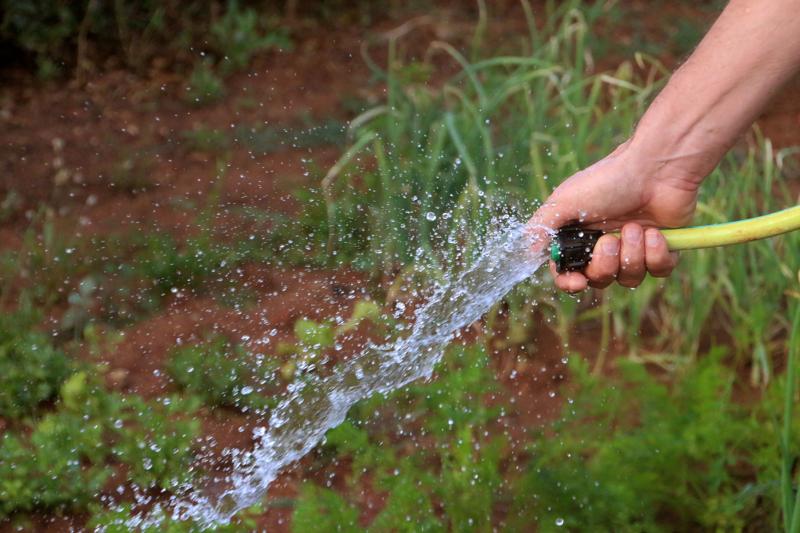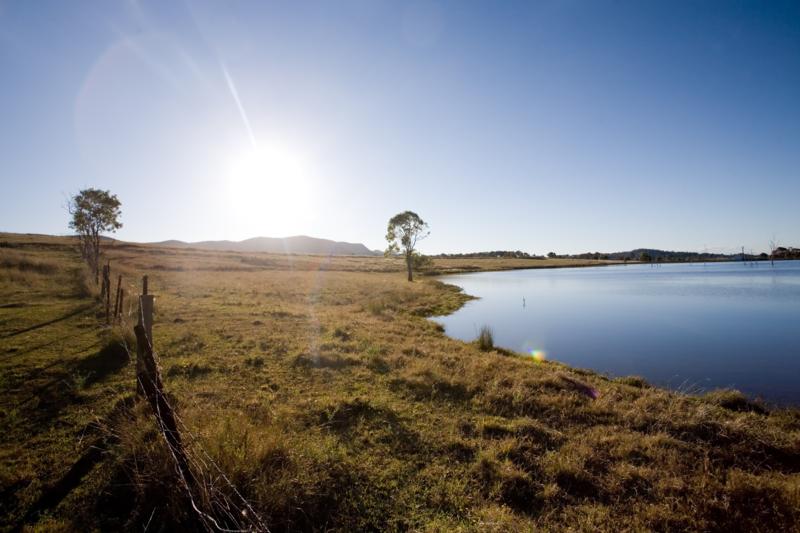WHEN I joined the Country Women’s Association (CWA) in 2008, I remember wondering why I hadn’t joined much sooner. It’s a wonderful organisation to be involved in and it gives Australian women, families and rural communities a voice.
One of the things the CWA does is get behind healthcare, especially in the bush. We lobby for health issues, such as getting people vaccinated for Q fever, and each year we sponsor a medical research project. This year the
CWA of NSW donated $34,000 to endometriosis research.
The latest emerging health issue we see as very important is Naegleria fowleri, a microorganism found in fresh, warm water and soil. It’s very rare, but it’s deadly, and it’s something rural Australia needs to be mindful of.
There are many different species of Naegleria but only one – Naegleria fowleri – infects humans. You can’t catch it from drinking contaminated water, or cooking with it, and even swimming in it is relatively safe. It is only lethal when water containing the bug goes up into the nose.
 Children playing with garden hoses on rural properties can be at risk of the disease. Source: Getty Images.
Children playing with garden hoses on rural properties can be at risk of the disease. Source: Getty Images.
I heard about it when my daughter Alyce saw an episode on the ABC’s Australian Story about a one-year-old boy who had died after playing with a garden hose on his family’s cattle station. It sounded dreadful – such an unexpected tragedy – but I thought it was unlikely to happen to me or to anyone I knew.
Then, a few years later, a family living just three hours away from us lost their young daughter to Naegleria fowleri. She had been playing with a sprinkler on a hot summer day, just like we all did when we were kids.
The grief-stricken parents were completely unaware that the warm hose water carried a fatal bug. It was another terrible tragedy and this time it was closer to home, which made me realise it could happen to anyone.
Naegleria fowleri only grows in fresh, warm water and needs temperatures above 25°C to become active. Even then it’s not dangerous unless it finds a foothold on the mucous membrane lining of the nasal cavity. It then quickly travels along olfactory nerves to the brain where it begins to destroy brain tissue. A Naegleria fowleri infection is usually fatal within five days.
RELATED ARTICLES:
Q fever battle: the boy we almost lost
Q fever health crisis: time to fight rural discrimination
The amoeba can also be found in soil; however water is the only known source of human infection. It doesn’t survive in clean, cool water and treated town water supplies are not at risk. But if you’re jumping, diving and splashing about in warm wading pools, lakes, shallow slow-moving rivers, dams, bores, tanks, pipelines, unchlorinated pools or natural hot springs, you need to beware.
 Naegleria fowleri can be a cause for concern in bodies of water on rural properties. Source: Getty Images.
Naegleria fowleri can be a cause for concern in bodies of water on rural properties. Source: Getty Images.
At this year’s CWA annual state conference in Albury, my branch, Galore, moved a motion to lobby NSW Health to promote the dangers of Naegleria fowleri. As the motion was carried unanimously by more than 700 women, the CWA is now lobbying the government to help raise awareness, especially in rural and remote communities.
RELATED COMMUNITY STORIES:
Bridging the education gap in Western NSW
Challenges of living in isolation
Bushfire risks heightened during drought
Sky high prices for regional flights
Thankfully, cases are very rare and there’s no need to start a scare campaign. But with summers getting hotter and hot spells lasting longer, it is important to know about the potential dangers that could be lurking in untreated bodies of water on your property.
**These are the personal views of Jane Lieschke. If you would like to be ‘On my soapbox’ in a future issue of The Farmer, email: [email protected] or write to: The Farmer, Suite 27/26-32 Pirrama Rd, Pyrmont, NSW 2009. If your topic is chosen, a journalist will be in touch.
What you need to know about Naegleria fowleri
- Also known as amoebic meningitis and primary amoebic meningoencephalitis, Naegleria fowleri is an amoeba found in fresh, warm water at 25-46°C.
- Infections occur when contaminated water goes up the nose and amoebas reach the brain.
- It was first identified in Australia in the 1960s and there have been at least 25 deaths here and 300 worldwide.
- Adults and children usually die within five days of exposure. Children are particularly at risk.
- Pets can also be infected.
- It cannot be spread from one person to another.
- Symptoms are similar to meningitis and initially include headache, fever, vomiting, stiff neck and confusion, followed by seizures, hallucinations and, usually, death.
- Almost all infections have been fatal although some medications have proven effective in the laboratory.
- It cannot survive in cool, clean or adequately chlorinated water.
Sources: NSW Health, World Health Organisation
How to minimise the risk of Naegleria fowleri
- Flush out warm or stagnant water before allowing children to play with hoses or sprinklers.
- Don’t allow water to go up your nose while swimming in non-chlorinated water.
- Teach children not to squirt water on their faces or up their noses.
- Empty and clean collapsible wading pools and let them dry in the sun after each use.
- Keep your head above water in spas, thermal pools and bodies of warm fresh water.
- Keep swimming pools clean, cool and adequately chlorinated.